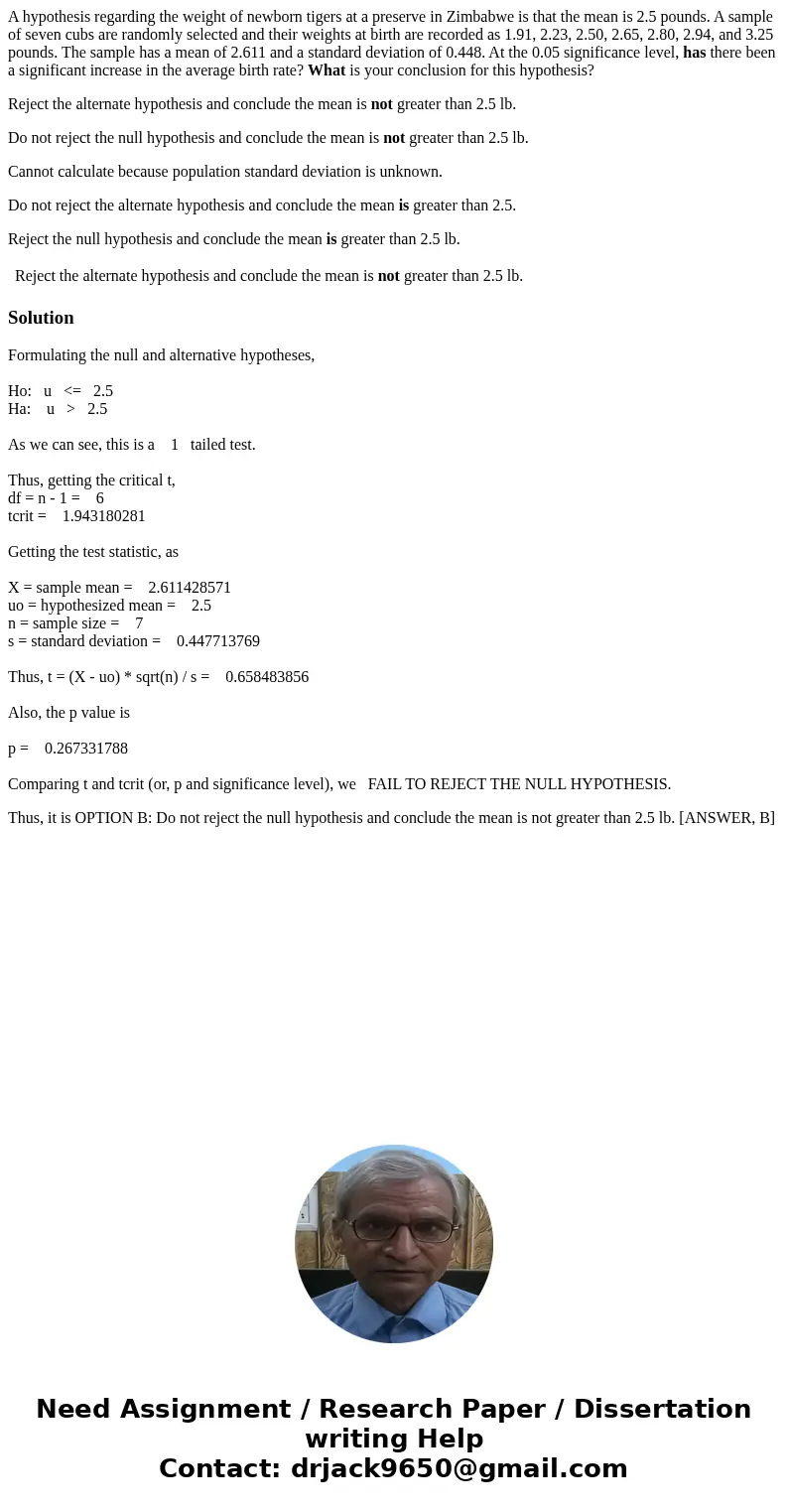A hypothesis regarding the weight of newborn tigers at a pre
A hypothesis regarding the weight of newborn tigers at a preserve in Zimbabwe is that the mean is 2.5 pounds. A sample of seven cubs are randomly selected and their weights at birth are recorded as 1.91, 2.23, 2.50, 2.65, 2.80, 2.94, and 3.25 pounds. The sample has a mean of 2.611 and a standard deviation of 0.448. At the 0.05 significance level, has there been a significant increase in the average birth rate? What is your conclusion for this hypothesis?
Reject the alternate hypothesis and conclude the mean is not greater than 2.5 lb.
Do not reject the null hypothesis and conclude the mean is not greater than 2.5 lb.
Cannot calculate because population standard deviation is unknown.
Do not reject the alternate hypothesis and conclude the mean is greater than 2.5.
Reject the null hypothesis and conclude the mean is greater than 2.5 lb.
| Reject the alternate hypothesis and conclude the mean is not greater than 2.5 lb. |
Solution
Formulating the null and alternative hypotheses,
Ho: u <= 2.5
Ha: u > 2.5
As we can see, this is a 1 tailed test.
Thus, getting the critical t,
df = n - 1 = 6
tcrit = 1.943180281
Getting the test statistic, as
X = sample mean = 2.611428571
uo = hypothesized mean = 2.5
n = sample size = 7
s = standard deviation = 0.447713769
Thus, t = (X - uo) * sqrt(n) / s = 0.658483856
Also, the p value is
p = 0.267331788
Comparing t and tcrit (or, p and significance level), we FAIL TO REJECT THE NULL HYPOTHESIS.
Thus, it is OPTION B: Do not reject the null hypothesis and conclude the mean is not greater than 2.5 lb. [ANSWER, B]

 Homework Sourse
Homework Sourse